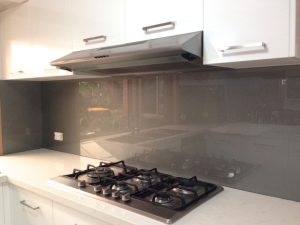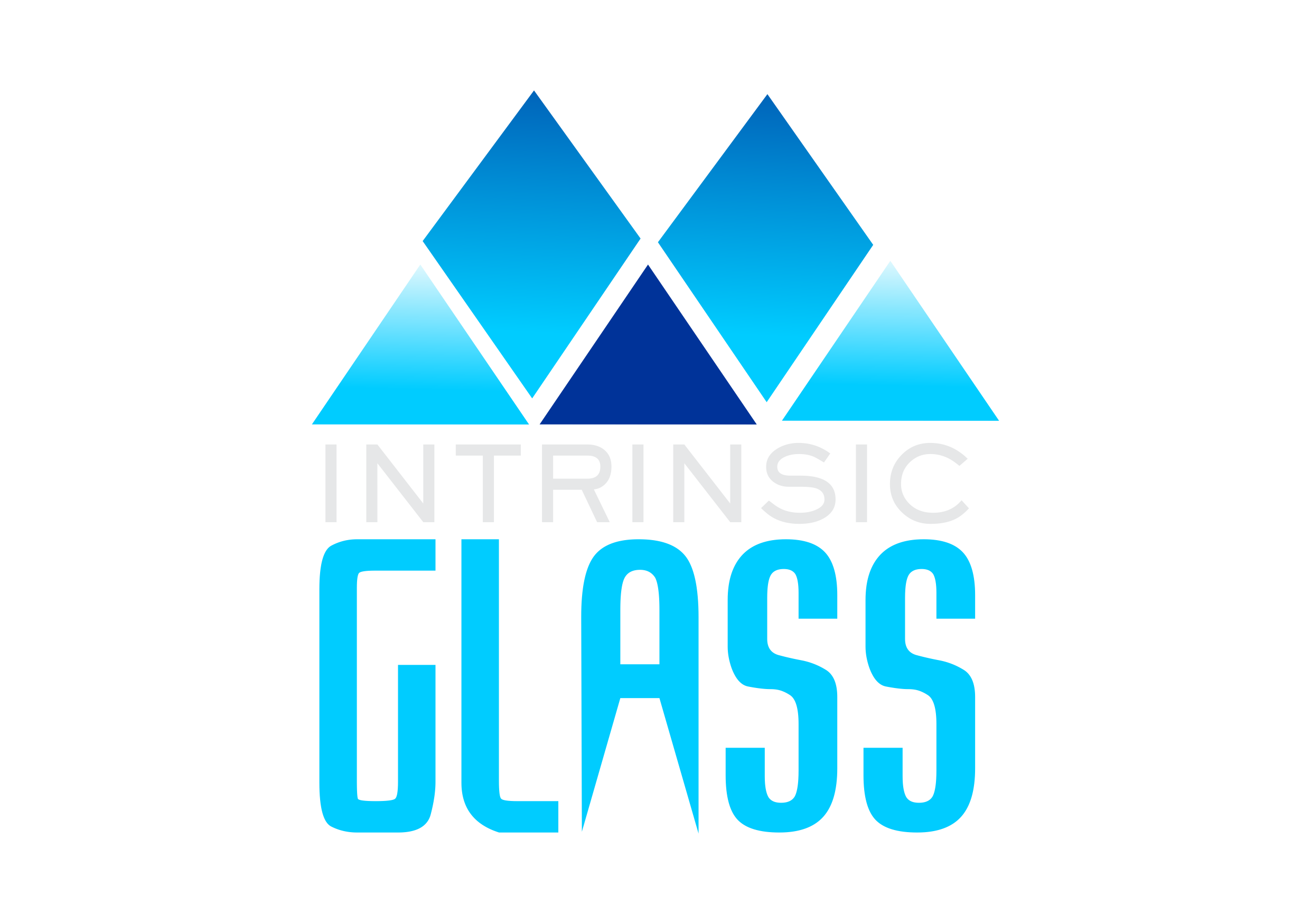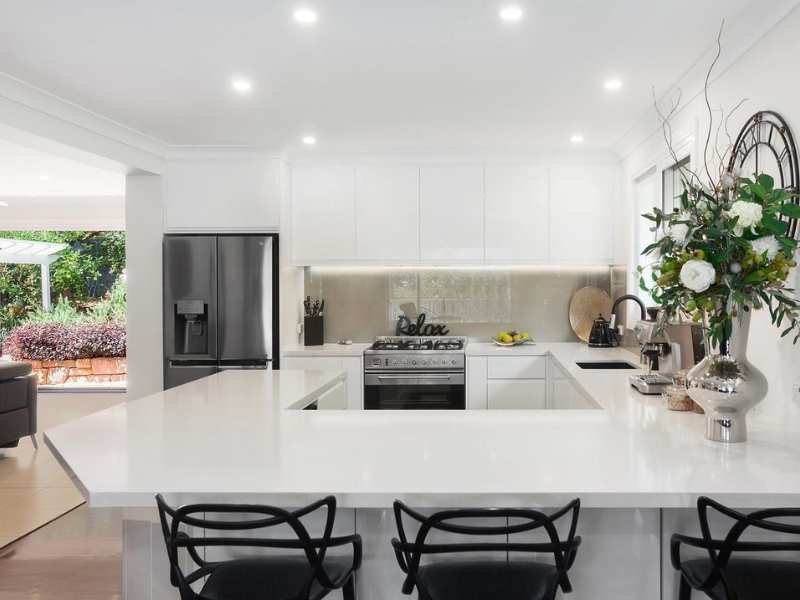A white frosted glass splashback can turn a tired kitchen into a polished, low-maintenance space. Its subtle, matte finish diffuses light and adds visual depth without stealing the spotlight. Unlike glossy tiles or high-shine acrylics, frosted glass brings a calm, understated touch to modern interiors.
It’s not just about good looks. This type of splashback handles heat, wipes clean in seconds, and offers a streamlined, grout-free surface. Homeowners fed up with scrubbing tile joints or dealing with warped panels are making the switch—and for good reason. If you’re planning a kitchen update or building fresh, this splashback might be the ace up your sleeve.
Why are white frosted glass splashbacks gaining popularity?
Kitchens cop a beating every day, and materials need to be up to the task. That’s part of why white frosted glass splashbacks are now in high demand.
- The frosted finish cuts glare while still reflecting light, making small kitchens feel more open while avoiding harsh reflections that can make the space feel clinical or cold.
- It hides smudges, splashes, and fingerprints, so the kitchen stays looking fresh longer with minimal upkeep, which is especially helpful in busy households.
- It works with virtually any design style, from bold colour schemes to neutral tones, allowing for long-term flexibility in decor changes.
- Panels are custom-sized, creating a seamless look and removing the visual clutter caused by grout lines or segmented panels.
What problems do other splashback materials typically cause?
Many homeowners are drawn to eye-catching materials that turn out to be high-maintenance or fragile in practice.
- Tile grout traps grease and moisture, which leads to discolouration and mould even with regular cleaning. These areas become harder to clean over time, especially near cooktops and sinks.
- Stainless steel shows every fingerprint, and scratches make the surface look aged too soon. Its commercial feel can also overpower smaller or more traditional kitchens.
- Acrylic splashbacks can warp near stoves, and their appearance fades under strong lighting. They’re also more prone to discolouration over time, especially in sunlit areas.
- Stone can stain or etch easily, making it impractical for high-use kitchens without ongoing sealing. Ingredients like lemon juice or vinegar can leave permanent marks, adding stress to daily cooking.
Even the most durable options can fall short if not installed correctly. Knowing how to prevent cracking in kitchen splashbacks is essential to keep your investment intact over time.
How does a white frosted glass splashback improve kitchen hygiene?
Clean kitchens aren’t just about appearance—they’re about surface hygiene. That’s where white frosted glass makes a real impact.

- Its non-porous surface repels bacteria, food splashes, and grease, helping keep the cooking zone clean and safe for food preparation.
- The lack of joints or grout lines makes cleaning faster, removing the common risk of mould growth in hidden corners. This means fewer crevices for microbes to multiply, especially in humid environments.
- Toughened glass can withstand strong cleaning agents, unlike porous or sealed surfaces that might degrade or absorb chemicals.
- Its smooth finish makes it easy to spot and wipe spills quickly, reducing the risk of staining or build-up that can attract insects or odours.
What design styles match a white frosted glass splashback?
Whether your kitchen leans minimalist or rustic, this splashback blends in effortlessly.
- In modern kitchens, it adds polish without reflecting too much light, creating visual balance with sleek cabinets and matte finishes. It acts as a visual reset, anchoring bold choices like coloured tapware or feature tiles.
- In industrial designs, it contrasts nicely with rougher materials like concrete or timber, softening the space while retaining the edge.
- Even traditional kitchens benefit, as they offer a neutral surface that doesn’t compete with natural timber, brass handles or vintage tiles.
Its ability to adapt across styles makes it an easy long-term win.
Can a white frosted glass splashback handle the heat and wear?
Definitely, it’s built for more than just appearances.

- It’s heat-resistant, safe for use behind electric or gas cooktops, and won’t warp under thermal pressure.
- It resists scratches from regular cleaning, staying looking sharp even with repeated wiping using cloths or sprays.
- Toughened to withstand impact, it holds strong against knocks, utensil drops, or shifting benchtop appliances. It has up to five times the strength of standard glass, offering durability for years.
- Custom panels reduce stress points, avoiding cracks and keeping the installation structurally sound.
If fire safety and construction codes are part of your reno checklist, explore current guidelines on non-combustible building products and compliance to stay above board.
What should you know before installing one in your kitchen?
Proper planning can save you hassle down the track.
- Measure after cabinets and benchtops are fully installed so your splashback fits precisely around fixtures and cut-outs.
- Ensure your wall is smooth and clean, as imperfections can show through or interfere with adhesion.
- Consider all powerpoint or range hood placements in advance so the panel is cut correctly on the first attempt. Late changes can delay the project or require re-cutting.
- Use a qualified installer, especially for large or heavy panels. Glass needs special handling and a secure mount.
Are white frosted glass splashbacks worth the investment?
More homeowners are choosing to install a white frosted glass splashback in kitchens early in the renovation process, avoiding messy retrofits. While upfront costs may be higher, the long-term value adds up fast.
- You’ll save on maintenance with fewer products and no need for regrouting or resealing.
- Its sleek look doesn’t age quickly, so you’re not replacing it every few years to keep up with trends. You won’t feel the urge to rip it out when fashions shift, unlike some trendy tiles or colours.
- Property buyers often rate clean, modern kitchens highly, which can improve resale outcomes for your home.
- Durability means fewer replacements, especially when compared to materials that chip, crack or fade. That reliability pays off whether you stay or sell.
Here’s how white frosted glass compares to other popular splashback materials:
| Feature | White Frosted Glass | Tile | Stainless Steel | Acrylic |
| Heat Resistance | ✅ Excellent | ✅ Good | ✅ Excellent | ❌ Moderate |
| Cleaning & Hygiene | ✅ Very Easy | ❌ Difficult | ❌ Streak-Prone | ✅ Easy |
| Style Versatility | ✅ High | ✅ High | ❌ Industrial | ❌ Limited |
| Maintenance Required | ✅ Low | ❌ High | ❌ Medium | ✅ Low |
| Lifespan | ✅ 10–20 years | ✅ 10–15 years | ✅ 10–15 years | ❌ 5–8 years |
It’s a one-time choice that continues to earn its keep.
Final thoughts
If you’re after a kitchen that’s both elegant and easy to live with, a white frosted glass splashback deserves serious consideration. It handles heat, keeps things hygienic, and suits a wide range of interiors without making a fuss. For those who value both form and function, it’s a solid bet.
If you’re researching options for your renovation, you might find it helpful to explore kitchen glass styles with Intrinsic Glass, where solutions are tailored to suit a wide range of home designs.

